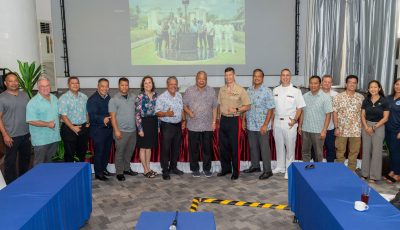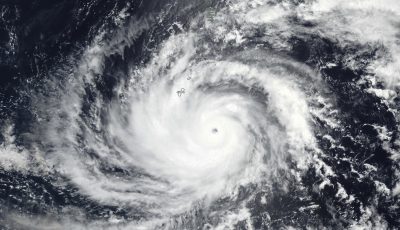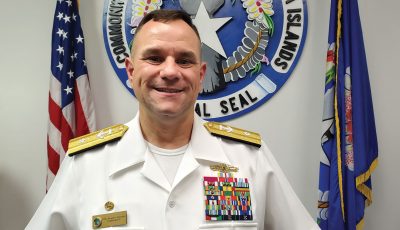‘Rick’s Column’
Geopolitics in the Marianas? Let me explain…
Buenas yan hafa adai.
Thank you for taking the time to read this introductory national and international security column. This column is being written because Guam, Saipan, Tinian, and the rest of the Marianas Islands are experiencing a historic pivot toward becoming the most militarized island chain and region on the planet. With this comes some benefits along with some tremendous costs to our ancient and present-day Marianas Islands home.
We are seeing history unfold today because the Marianas Islands and the Western Pacific region are being used by the United States to aggregate, train, test, research, evaluate, position, employ, deploy, and prepare for war across the spectra of conflict and violence. The ongoing militarization of the Marianas Islands covers several domains to include the undersea, sea level, land, terrestrial subsurface, air, space, information, and cyber. The militarization of the Marianas is all-encompassing, conventional, paramilitary, unconventional, contractor and subcontractor driven, touching all strands of Chamorro villager and island society to include political, economic, social, cultural, environmental, linguistic, agricultural, and educational realms and behaviors.
Our ancient Chamorro civilization and home isles have become from one point of view, a priceless American collection of resources located in a key part of the world because of the Marianas’ relative proximity to East Asia, which is the world’s center of economic power and home to South Korea, the Philippines, Taiwan and Japan, all key American allies, and partners. Our island chain supports American led multilateral cooperative operations to help the United States fulfill its security commitments in the region and beyond, yet what gets lost in many conversations is that the Chamorro people of the Marianas have sacrificed and continue to sacrifice rare resource corridors, without having real and equal say and political decision-making power on matters of war and peace on our own ancient island chain.
Today, America and China are engaged in a great power competition, with our beautiful island chain and region being caught in the middle. North Korea continues to produce medium and long-range missiles for use against our islands, key American allies, and the United States homeland. American overseas contingency operations and national security policy directives created in Washington, D.C. translate into local domestic policy challenges and mission-oriented actions such as anti-access and area denial operations. Military decisions made by the Chinese government also directly affect the Marianas and the broader Micronesia region through the Chinese government’s Maritime Silk Road initiatives.
With all these developments happening, now is the time to begin to expand the national security discussion amongst ourselves—the Chamorro people and villagers—and to further demystify international security matters because it affects us all, directly, and indirectly. This column hopes to help take away any magical thinking on matters of American national security, international security, and geopolitics so that we can collectively develop a better basic understanding of what’s happening.
Over the next several columns, we will begin to further explore how American militarization has affected us all, and then we will move into a broad discussion of geopolitics to further demystify our total environment.
This column hopes to see more people talking about national security and international security, geopolitics, generating new questions and seeking new answers in an uncertain and ever-changing environment. For some, national security is something that is unclear, vague, overwhelming, scary, confusing, or complex, while for others it is something they like and understand.
Guam and the Northern Marianas are deeply colonized islands and American political and military colonialism has affected the colonizing administering authority—the U.S., American military and intelligence personnel, and the target population, the Chamorro people of the Marianas. It cannot be overemphasized that talk about American national security isn’t complete until it fully incorporates, wrestles with, challenges and fully addresses a broad list of ongoing insular and village security concerns that remain unresolved, under discussed or omitted. Some topics that come to mind include freshwater availability and sustainability challenges, food insecurity, medical access insecurity, job insecurity, veteran’s affairs insecurity, waste generation insecurity, land taking injustices, cost of living and inflation insecurity, and political representation and decolonization insecurity.
The Marianas Islands has an especially dark legacy of environmental contamination and insecurity from military actions that remains taboo to talk about. Guam, Saipan, and Tinian were extensively damaged from war. Post war military actions heavily contributed to this undesired and poisonous outcome. Yet throughout all these years and despite the lack of transparency provided by the national government, Pacific Islanders have persevered, and have been able to somehow manage through monumental change, demonstrating the resolve and resilience of our families.
But today things are different and national and international security stakes are higher. China is already knocking on our regional doorstep and decades of undisputed control of the Western Pacific for the United States is over. China, Russia, North Korea, and the U.S. are currently engaged in a massive arms race that creates new risks, new dangers and new opportunities for major miscalculation that could lead to hot war. Many risks are not known or well understood.
It is with this in mind, that we have a strong incentive to continue to better understand for ourselves, the geopolitics in our region and better understand for ourselves how the United States national security community thinks about our island chain and our people because the Western Pacific is where America’s day is supposed to begin and, according to the Chinese, where the second island chain is supposed to begin. Now is the time to recommit more time toward thinking and focusing on where the Marianas Islands’ day is supposed to begin and how it fits into this geopolitical pressure cooker.
Rick Perez (Special to the Saipan Tribune)
Rick Perez used to serve in the U.S. military and has work experiences in public policy research and public affairs. He is passionate about national security and geopolitics and runs a newsletter called Guam Affairs at guamaffairs.substack.com. For questions or comments, contact Perez at rickp7839@gmail.com.



























